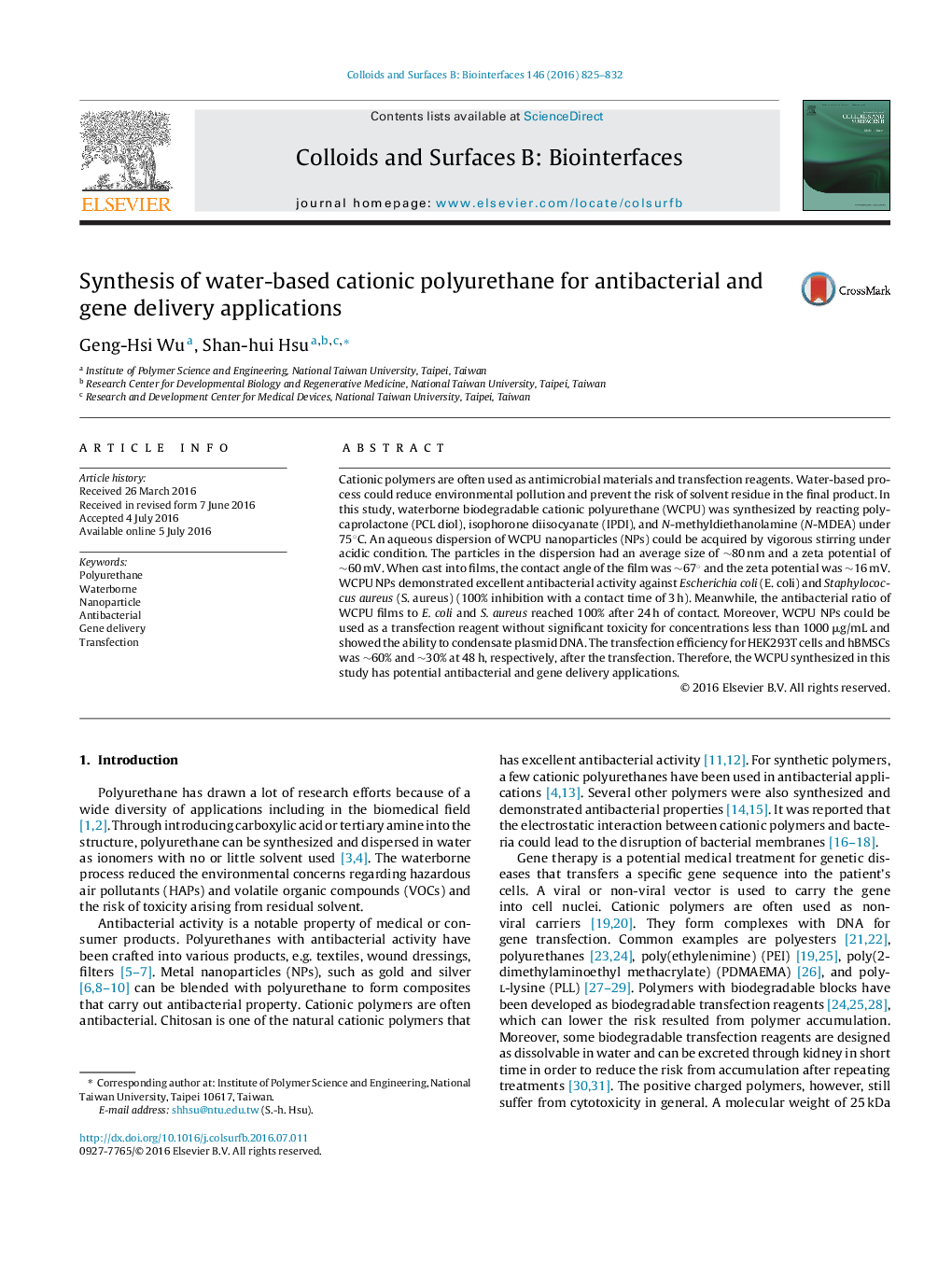| Article ID | Journal | Published Year | Pages | File Type |
|---|---|---|---|---|
| 598816 | Colloids and Surfaces B: Biointerfaces | 2016 | 8 Pages |
•Waterborne cationic polyurethane (WCPU) was successfully synthesized.•WCPU NPs and films have excellent antibacterial activity.•WCPU NPs enhance the transfection efficiency of plasmid DNA.
Cationic polymers are often used as antimicrobial materials and transfection reagents. Water-based process could reduce environmental pollution and prevent the risk of solvent residue in the final product. In this study, waterborne biodegradable cationic polyurethane (WCPU) was synthesized by reacting polycaprolactone (PCL diol), isophorone diisocyanate (IPDI), and N-methyldiethanolamine (N-MDEA) under 75°C. An aqueous dispersion of WCPU nanoparticles (NPs) could be acquired by vigorous stirring under acidic condition. The particles in the dispersion had an average size of ∼80 nm and a zeta potential of ∼60 mV. When cast into films, the contact angle of the film was ∼67° and the zeta potential was ∼16 mV. WCPU NPs demonstrated excellent antibacterial activity against Escherichia coli (E. coli) and Staphylococcus aureus (S. aureus) (100% inhibition with a contact time of 3 h). Meanwhile, the antibacterial ratio of WCPU films to E. coli and S. aureus reached 100% after 24 h of contact. Moreover, WCPU NPs could be used as a transfection reagent without significant toxicity for concentrations less than 1000 μg/mL and showed the ability to condensate plasmid DNA. The transfection efficiency for HEK293T cells and hBMSCs was ∼60% and ∼30% at 48 h, respectively, after the transfection. Therefore, the WCPU synthesized in this study has potential antibacterial and gene delivery applications.
Graphical abstractSynthesis of waterborne cationic polyurethane (WCPU) and evaluation for its applications as antibacterial materials and gene carriers.Figure optionsDownload full-size imageDownload as PowerPoint slide
